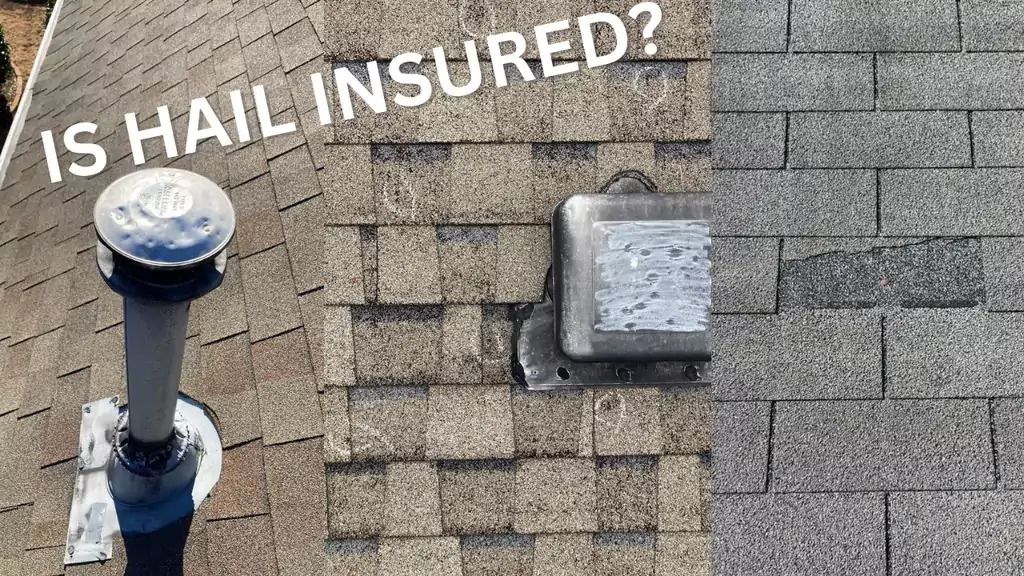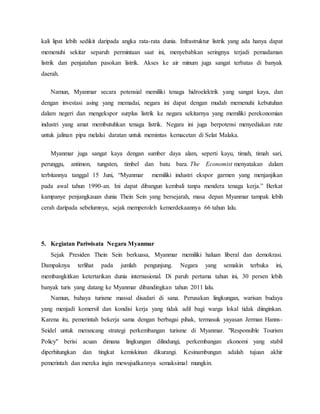Recent Hailstorms: Assessing Damage To Pools And Lawns

Table of Contents
Assessing Pool Damage After a Hailstorm
Hailstorms can cause significant damage to swimming pools, impacting both the structural integrity and the functionality of the equipment. A thorough assessment is crucial for effective repairs and insurance claims.
Identifying Hail Damage to Pool Surfaces
Visually inspecting your pool for damage is the first step in your hail damage assessment. Look for the following signs:
- Cracks in plaster: Check the pool's surface carefully for any cracks, large or small. These can compromise the pool's structural integrity and lead to leaks.
- Chipped tiles: If your pool has tilework, inspect it for chips or missing pieces. Hailstones can easily dislodge tiles, creating unsightly damage.
- Damaged coping stones: The coping stones around the pool's edge are susceptible to chipping and cracking from hail impact.
- Discoloration of the pool finish: Hail can cause discoloration or pitting of the pool's surface, particularly on older finishes.
- Debris in the pool: After a hailstorm, it's essential to remove any debris such as leaves, branches, and hailstone remnants from the pool.
After a visual inspection, carefully check for leaks. Look for any signs of water seeping from the pool structure, and check the water level over a period of time to detect any slow leaks. Don't forget to inspect the pool's plumbing and equipment.
Evaluating Pool Equipment Damage
Hailstorms can also damage the vital equipment that keeps your pool running smoothly. Check the following:
- Damage to pumps: Inspect pumps for cracks, dents, or other signs of physical damage. Listen for unusual noises during operation.
- Damaged filters: Examine the filter housing and the filter media for any damage. Check for leaks around connections.
- Damaged heaters: Hail can damage the delicate components of pool heaters, potentially affecting their performance and safety.
- Broken automatic pool cleaners: These automated systems are vulnerable to damage from hail. Check for broken components or malfunction.
- Broken pipes or electrical issues: Inspect all pipes and electrical connections for damage. Never attempt repairs without proper training and safety precautions. Always turn off the power supply before inspecting electrical components.
The cost of repairs or replacements for damaged pool equipment can be substantial, so a careful assessment is vital.
Documenting Hailstorm Pool Damage for Insurance Claims
Thorough documentation is critical for successful insurance claims following a hailstorm. Follow these steps:
- Taking photos and videos of the damage: Capture images and videos of all the damage, including close-up shots of cracks, chips, and other issues. Include shots showing the overall condition of the pool and equipment.
- Keeping receipts for repairs: Maintain detailed records of all expenses related to repairs or replacements.
- Contacting your insurance provider promptly: Report the damage to your insurance company as soon as possible. Provide them with your documentation to initiate the claims process.
Detailed descriptions of the damage are vital for your insurance claim. Be accurate and comprehensive in your reports.
Evaluating Lawn Damage After a Hailstorm
Hailstorms can severely damage lawns, trees, and shrubs. Understanding the extent of this damage is essential for effective recovery.
Identifying Hail Damage to Grass
The impact of hail on your lawn can range from minor bruising to complete destruction. Look for these signs:
- Bruised or flattened grass: Hail can bruise grass blades, causing them to appear flattened and discolored.
- Discoloration: Damaged grass blades may turn brown or yellow.
- Damaged leaves: Examine the leaves of your grass closely for tearing or bruising.
- Loss of grass: In severe cases, hail can strip away the grass completely, exposing bare soil.
- Exposed soil: Severe hail damage can leave patches of exposed soil.
The size of the hailstones directly impacts the severity of the damage. Larger hailstones cause more significant damage.
Assessing Damage to Trees and Shrubs
Trees and shrubs are also vulnerable to hail damage. Check for the following:
- Broken branches: Inspect trees and shrubs for broken branches, especially on younger, more delicate plants.
- Damaged leaves: Examine leaves for tears, punctures, and discoloration.
- Overall health of plants after hail impact: Assess the overall health of your plants. Some may recover, while others may require pruning or other treatments.
Hail damage to plants can have long-term effects on their health and vitality, potentially weakening them and making them more susceptible to disease and pests.
Documenting Hailstorm Lawn Damage for Insurance Claims
Similar to pool damage, meticulous documentation is crucial for your insurance claim regarding lawn damage.
- Taking photos of the damaged lawn before and after any cleanup: Document the extent of the damage before you begin any cleanup.
- Keeping records of any remediation efforts: Maintain records of any actions you take to address the damage, such as reseeding or fertilizing.
- Contacting your insurance provider: Report the damage to your insurance company as soon as possible, providing detailed descriptions and photographic evidence.
Evidence of the hail event itself, such as photos or weather reports, will strengthen your insurance claim.
Next Steps After Hailstorm Damage Assessment
After assessing the hail damage to your pool and lawn, it's time to take action.
Contacting Professionals
Contacting qualified professionals is vital for repairs.
- Pool repair specialists: For pool damage, contact licensed and experienced pool repair companies for assessments and repairs.
- Landscapers: For lawn and plant damage, consult experienced landscapers for advice and remediation services.
- Insurance adjusters: Contact your insurance adjuster to discuss your claim and schedule an inspection.
Choosing reputable professionals ensures that repairs are done correctly and to the highest standards.
Temporary Repairs
While awaiting professional assistance, consider taking some temporary steps:
- Pool: If you have significant leaks, consider covering the pool to prevent further water loss. For minor damage, you might temporarily patch cracks or cover damaged areas to prevent further deterioration.
- Lawn: For damaged lawns, consider watering regularly to help the grass recover and prevent it from drying out.
These temporary measures can help mitigate further damage and protect your property.
Filing an Insurance Claim
Filing an insurance claim involves several steps:
- Gather your documentation: Compile all the necessary documents, including photos, videos, receipts, and repair estimates.
- Contact your insurance provider: Contact your insurer to report the damage and start the claims process.
- Follow up on your claim: Keep track of your claim's progress and follow up with your insurer if necessary.
A well-documented claim, supported by professional assessments, will help expedite the process.
Conclusion
Assessing hail damage to your pool and lawn requires careful observation and thorough documentation. From identifying cracks in your pool plaster to evaluating damage to your grass and plants, understanding the extent of the damage is crucial for effective repairs and successful insurance claims. Remember to thoroughly document all hail storm damage with photographs and videos for your insurance claim. Don't delay – contact professionals promptly to address any damage and begin the repair process. Taking swift action will help mitigate further damage and ensure your outdoor spaces are restored to their former glory. Contact your insurance provider immediately to discuss your hail storm damage assessment and initiate the claims process. Don't hesitate to seek professional help for a comprehensive hail damage assessment and subsequent repairs.

Featured Posts
-
 The Witchers Sirens Of The Deep Why Henry Cavill Isnt Returning As Geralt
May 12, 2025
The Witchers Sirens Of The Deep Why Henry Cavill Isnt Returning As Geralt
May 12, 2025 -
 Aaron Judges 1 000 Games Hall Of Fame Trajectory
May 12, 2025
Aaron Judges 1 000 Games Hall Of Fame Trajectory
May 12, 2025 -
 Karate Full Contact Cinco Uruguayos Necesitan Tu Ayuda Para El Mundial
May 12, 2025
Karate Full Contact Cinco Uruguayos Necesitan Tu Ayuda Para El Mundial
May 12, 2025 -
 The Zuckerberg Trump Dynamic Implications For Tech And Policy
May 12, 2025
The Zuckerberg Trump Dynamic Implications For Tech And Policy
May 12, 2025 -
 Remembering A Fallen Hero Fremont Firefighter Honored
May 12, 2025
Remembering A Fallen Hero Fremont Firefighter Honored
May 12, 2025
Latest Posts
-
 Myanmar Crisis Assessing The Hypocrisy Of Britain And Australias Response
May 13, 2025
Myanmar Crisis Assessing The Hypocrisy Of Britain And Australias Response
May 13, 2025 -
 Britain And Australias Double Standard Selective Sanctions Against Myanmars Junta
May 13, 2025
Britain And Australias Double Standard Selective Sanctions Against Myanmars Junta
May 13, 2025 -
 Britain And Australias Myanmar Policy Hypocrisy Or Pragmatism
May 13, 2025
Britain And Australias Myanmar Policy Hypocrisy Or Pragmatism
May 13, 2025 -
 Foto Investigasi Jaringan Penipuan Online Internasional Di Myanmar Dampaknya Pada Pekerja Indonesia
May 13, 2025
Foto Investigasi Jaringan Penipuan Online Internasional Di Myanmar Dampaknya Pada Pekerja Indonesia
May 13, 2025 -
 Myanmar Foto Foto Pekerja Korban Penipuan Online Internasional Wni Teridentifikasi
May 13, 2025
Myanmar Foto Foto Pekerja Korban Penipuan Online Internasional Wni Teridentifikasi
May 13, 2025
